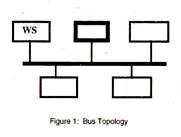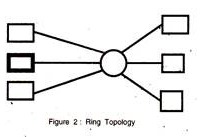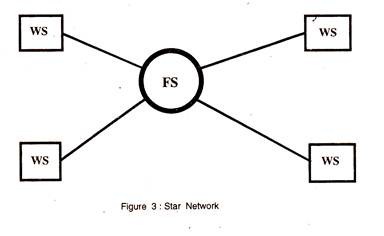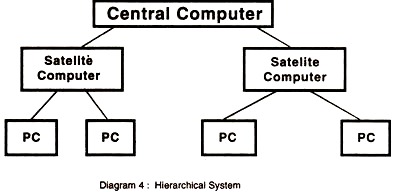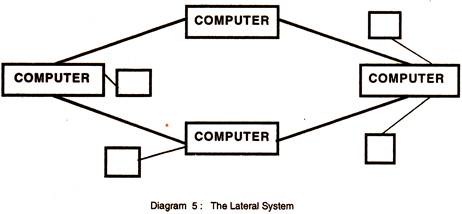In this essay we will discuss about the definition and means of telecommunication.
Essay # 1. Definition of Telecommunication:
With development of computer systems, now telecommunication has acquired a new dimension where the computers and telephone systems have been integrated with mutual benefit to each other. Unlike human beings, two computers sitting side by side cannot communicate with each other, unless they are interconnected using some communication system.
Communication in the real sense means exchange of information, ideas, thoughts, etc. between two persons through the medium of special codes called languages; although non-human species do also communicate among themselves.
The problem of human communication acquires a new dimension when it involves two persons who are physically far apart, not being able to talk to each other directly. With the invention of telegraphy and its further development, we reached a stage where we could communicate over telephone systems.
Computers are interconnected for:
1. Providing better service to customers by pooling the resources available at different centres to a centre convenient to the customer. The Computerized Railway Reservation Service is a classic example. For example, you can buy a ticket for travelling from Puri to Calcutta form the centres situated in your locality; which earlier could only be done, directly, from the counter at Puri only.
2. Controlling geographically dispersed units/branches of a business organisation for better coordinated operation.
3. Sharing specialised knowledge like the library network linking different libraries.
4. Sharing costly equipment like say laser-printer and making better utilisation.
5. Better utilisation of costly computer set up by providing many inter-active terminals to different users.
6. Inter-active communication across computers with the facility of Electronic Mail [E-mail], Bulletin Board Service [BBS], etc.
7. Acquiring distant computing facility instead of buying a large computer, through Remote Time Sharing terminal.
Essay # 2. Means of Telecommunication:
i. Digital vs. Analog Transmission:
The electric signals used for transmitting data or verbal-communication can be of two types, Analog or Digital. In analog-transmission, electro-magnetic waves are transmitted, where as in digital-transmission electrical pulses are used as signal, which are in binary form.
The transmission fate in analog transmission is expressed in frequency, which is measured by Herz, where 1 Hz stands for 1 cycle per second; its capacity being specified by its bandwidth. The capacity of a digital transmission is measured by the number of bits transmitted per second or bps.
ii. Bandwidth:
Any electro-magnetic wave can be broken down into a number of symmetrical waves called pure tones having different frequencies. In transmission technology, bandwidth indicates the difference between this upper and lower frequencies, that is, the range of frequencies of signals that can be transmitted over the channel using electro-magnetic waves without hardly any loss in power-level.
Higher the bandwidth, the greater the volume of data that can be transmitted per unit time.
Depending on bandwidth, channels are classified as narrow-band, voice-band, and broad-band types. As the name suggests, narrow-band has a very low bandwidth, in which data can be transmitted at a rate of about 5 to 30 character per second [cps] and these are used in telegraph transmission using Morse codes.
The next higher level, called voice-band are used in normal telephone lines with the frequency range of 300 – 3400 Hz for voice transmission and their capacity is about 1000 cps.
The channel with highest bandwidth is called broad-band or wide-band channel, which is being increasingly used even in telephone systems; which has a capacity of about 100,000 cps. All the three classifications stated above are used in analog transmission, where electro-magnetic waves are used as signals.
In broad-band transmission, the signal to be sent is integrated with a special high frequency wave called carrier-wave and this is transmitted, the actual wave being isolated at the receiving end from the carrier-wave.
There is another way of transmitting signals and this is called baseband transmission, in which either the electro-magnetic wave of digital pulses are transmitted without any change in the original form as generated, but this is possible only over a short distance.
For long distance transmission, the digital signals are converted to analog waves and transmitted by carrier waves. However, long distance digital transmission are now being, developed, under the system called ISDN or Integrated Service Digital Network.
iii. Modulation:
Since the computers we use are digital computers, the signals generated by them are binary coded pulses, whereas, the transmission network which is in existence through telephone lines handle voice-band analog waves. Hence to send data from one computer to another with broadband transmission, these digital signals have to be converted to appropriate electro-magnetic waves.
Along with digital to analog conversion, the original signal [baseband] is mixed with a carrier frequency by Amplitude, Phase, or Frequency Modulation. This is done by a device called modulator. At the receiving end, the analog signal is again converted back to digital pulses and separated from the carrier wave by using a demodulator. The combined device of modulator-demodulator is called a modem in short.
iv. Circuit Elements:
Since communication involves two sources, the ideal circuit condition is when both can simultaneously communicate to each other, like we do in our local telephones. When one person is saying something in the mouth-piece, his ear-piece of the set is in attendance to receive what the other person would say.
This is called full-duplex circuit—providing a simultaneous two-way flow of signals. The other alternative could be, when a single circuit is used, both being not able to talk to each other simultaneously—only one can talk at a time with the other listening.
This is called a half-duplex system which is generally followed in International Subscriber Trunk Dialing System [ISTD], etc.—the signal flows in both direction but only one at a time. There is a third choice, when one- can only talk and cannot listen— the signal flows in one direction only. A classic example would be the loud-speakers blaring at us. This is called a simplex circuit.
v. Multiplexing:
From economic considerations, a large number of low-speed signals can be combined together and then sent across a high-speed transmission channel—at the receiving end the individual signals being again segregated. This process of combining different signals is called multiplexing, as multiplex means many-to-one. Its reverse is de-multiplexing.
Three basic methods of multiplexing used are called Speed Division Multiplexing [SDM], Frequency Division Multiplexing [FDM], and Time Division Multiplexing [TDM].
vi. Local Area Network [LAN]:
In an effective information system it is necessary to ensure fast and flexible movement of data in an economical manner with low error-rate between independent computing units which are interconnected to form a network. When the area of such networking is physically restricted within the business premises of an, organisation, it is called a Local Area Network or LAN.
The unique characteristic which identifies a LAN is that the transmitted signal, which is digital, comes within the category of baseband transmission, that is, the signal generated is transmitted in its original form without any alteration and at any moment of time, only one signal can flow in the network. The network service is controlled through time-sharing or time-division multiplexing.
For necessary operation, a LAN has to provide for the following specifications:
1. A medium through which the data flows—twisted-pair wire, co-axial cable, etc.
2. Network Interface Card [NIC] which connect the computer and the communicating medium.
3. A topology, defining the configuration of physically inter-connecting the standalone machines—how these are connected to form the network system as a whole.
4. An access protocol which specifies how the individual units would use the network for transmission.
5. A set of programs, collectively called Network Operating System to ensure error- free operation of the system with full security and protection.
Naturally, a LAN has to be reliable, serviceable, and available to its members when required. Under LAN, the computers, inter-connected retain and use their own computing power, resulting in effective distributed processing.
The reasons or advantages for using LAN are:
1. Security:
Extensive security is possible under the LAN setup relating to use of programs, data, etc. by different users.
2. Distributed Processing:
By maintaining the computing ability of the individual computers connected to the network system, the processing can also be done in these units in a dispersed manner.
3. Inter-Unit Communication:
It becomes possible for each user to interact with other with messages through Electronic Mail or E-mail.
4. Reduced Cost:
Cost can be minimized in hardware, as well as software used by sharing them among all users.
5. Flexibility:
The network system can be expanded to cover additional units or it may even be inter-connected with other networks.
In a LAN system, a particular computer with higher capacity and speed is generally treated as a File Server where the files are stored and which manages the files, handles communication, allocates resources, controls operations, etc.—it has the network operating system installed in it.
The other computing units are- called Work Stations, with their own operating system of MS DOS or OS/2, where the processing are carried out. Incidentally, LAN forms peer-level network, where all the computers in it can communicate with each other. This is unlike the terminals of the mainframe or minicomputer, which can only communicate with the host and not among themselves.
vii. Network Topology:
The physical method of inter-connecting the individual computer units is called the topology and it is one of the way of classifying LANs. Topology indicates the routes along which the data moves from one unit to the other.
The different topologies available are:
1. Bus or Linear Network:
Under this system, all the computers are connected in parallel to each other thorough a common connecting cable called bus, which is open at the two ends, as shown in Figure 1. One of the network system using this topology is known as Ethernet system.
2. Ring Network:
It is identical to the bus topology except that the two ends of the bus are connected to form a closed path or a ring of network as shown in Figure 2. The Cambridge Ring uses this topology.
3. Star Network:
Under this topology, all the computers are connected to a central hub which control switching, communication, and other functions. Its configuration is shown in Figure 3.
viii. Wide Area Network [WAN]:
As the name suggests, WAN interconnects computers, which are geographically far apart, and hence the medium used for the system is provided by the traditional Telecommunication Network built up for the telephone system.
Such networks use broadband transmission, where a number of signals can be transmitted simultaneously. Modern telecommunication networks can carry different types of analog and digital signals for voice and data.
Under the WAN system, each computer has to have a modem for converting the digital signals to analog waves and then integrating it with carrier waves for transmission —the ultimate connection is from computer to computer.
The topology for WAN is described as meshes or tree configuration. The transmission takes place using different intermediate nodes along different links. With latest technological developments, the telephone network system is being changed to be fully digital under the protocol developed for Integrated Services Digital Network [ISDN].
Wide Area Networks have extensive application in the areas of:
1. # Communications between computing units.
2. # Interaction between computer terminals and the host computer.
3. # Open air Audio and Video signals.
4. # Close circuit TV for safety-, fire-control, etc.
5. # Satellite control and weather forecasting, etc.
The Advantages are:
1. High speed communication.
2. Physical independence—distance is not a factor.
3. Versatility—can accommodate any expansion/extension.
4. Transmission of audio, video, and data signals simultaneously.
5. Flexible control system—can be centralised or decentralised.
ix. Distributed Data Processing [DDP]:
Prior to 1980s, when the concept of networked system was yet to be fully developed, all computer processing jobs used to be done in a centralised manner—the mainframe or minicomputer being the host where the processing used to be done being controlled from a number of dumb terminals, which were not in a position to communicate between themselves.
With the development of network systems, under the platform of MS DOS or OS/2, peer-level communication became possible, that is, each computer within the network being able to communicate with the other, the technique of Distributed Data Processing evolved.
Under this processing system, inter-connected but physically separated databases, positioned in different geographical locations in different computers, which retain their own processing powers, can function as one comprehensive unit as viewed by the end-user—this is being done by making them a part of a network, which uses the national communication network with their own modems.
If two or more computers are inter-connected we have a network system, but, if these inter-connected computers function as a single computer logically, it forms a distributed data processing system.
For example, an airline may have its passenger reservation system’s databases physically distributed at Calcutta, Delhi, and Madras with the main system at Bombay. Now it is quite infrequent for a person at Bombay or Madras asking for a Calcutta-Guwahati ticket.
If DDP is not implemented, with the host computer at Bombay with the database, terminals would be required at Calcutta and Guwahati and they would have to regularly communicate with Bombay. But with a DDP system, a computer at Calcutta will have a portion of the database of the Calcutta-Guwahati circuit—the processing being done where the activity is taking place.
The advantages of DDP are:
1. Reduction in transmission cost.
2. Faster processing of transactions.
3. Better control of the system at local centres.
4. Increased system reliability.
5. Better protection from the total system being damaged.
As an example, we can refer to the Hewlett-Packard Company of USA, whose DDP system uses 10 mainframe computers, about 1000 minicomputers and about 40,000 Personal Computers, spread over different countries.
Since DDP systems are networked systems, some of the concepts of physical interconnection has been borrowed from LAN systems. In the hierarchical system, which is an extension of the star topology, a central host computer communicates with and exercises control over a number of satellite [or node] computers at the second level.
A satellite may in turn, act as a host to a third level of sub-ordinate computers or terminals. Generally, the host is a main computer with the satellites being minicomputers at the second level and Personal Computers at the third level, as shown in Diagram 4.
The lateral system is an extension of ring topology, where each computer in the system has equal status—no single computer acting as a host or main computer. Each computer generally has Personal Computers or Terminals attached to them, as shown in Diagram 5.
x. Real-Time System:
A real-time system is a special case of on-line system or interactive system, where the response time is of critical importance. Once an input is fed in, the output has to be available in quickest possible time. Apart from industrial control systems, the passenger reservation system of airlines, railways, etc. are typical applications of real-time systems.
When the number of terminals of a real-time system is more than one, the concept of time-sharing becomes important. The system operates in such a manner, that each terminal user feels that he has the system at his total disposal; but in reality, the processing time is allocated to each user in turn, giving a time-slice of the processing time.
xi. Electronic Mail:
The electronic mail is almost identical with the postal service which brings us printed mail, except with a critical difference. Here, in E-Mail, the mail is transmitted over communication networks to computers, which have access to the network.
There are electronic mail boxes, which are nothing but specified storage places in the hard disk, where the receiving mail arrives and awaits disposal. When the computer is switched on, the user is informed that mail is waiting for disposal. The mail can be read, permanently removed, stored for future use, or retransmitted to others.
xii. Voice Messaging:
In this system, the signals sent and received are ultimately converted to audio signals at the both end to enable the sender and receiver to talk to each other instead of using keyboards and monitors to communicate. In India, SAIL has installed this voice-network between its different offices, located at different regions.
